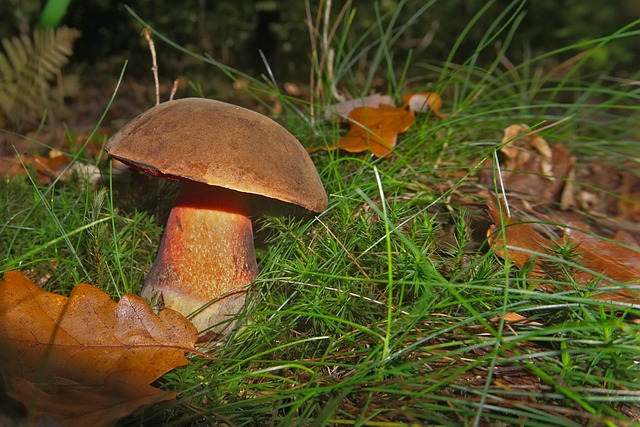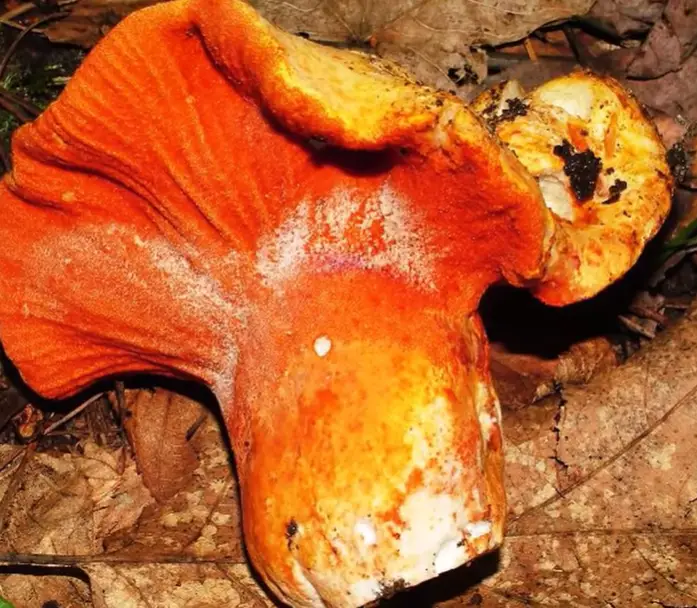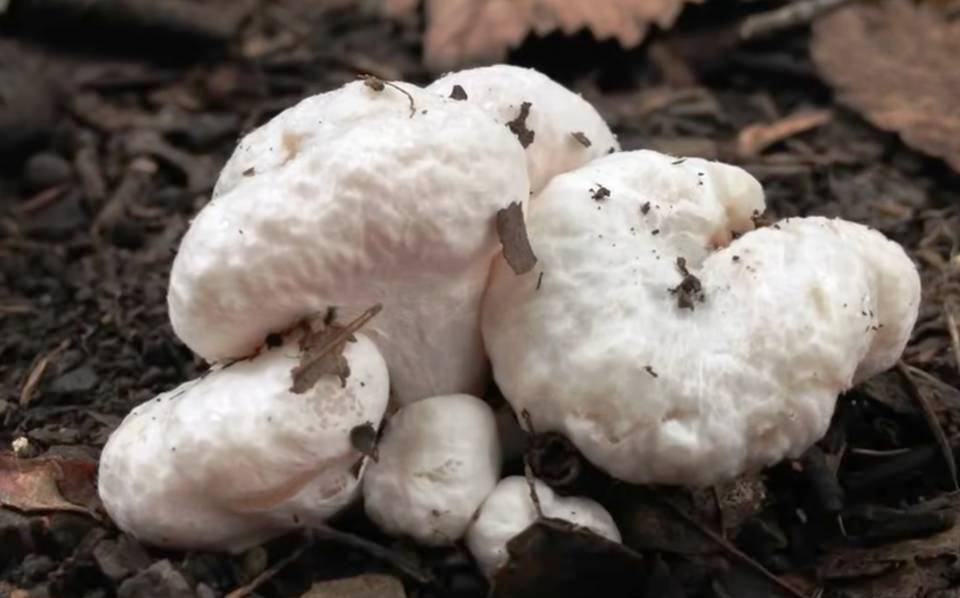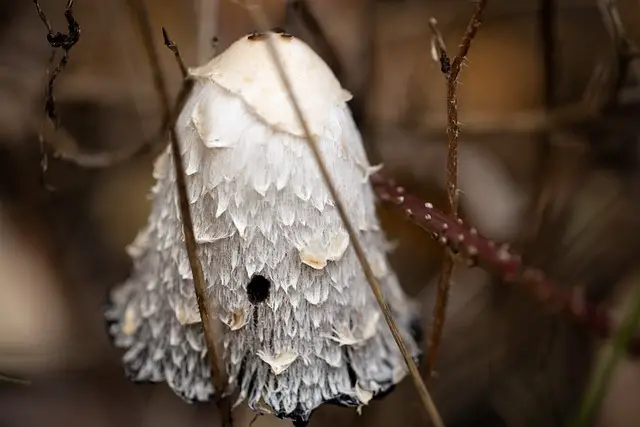Estimated reading time: 15 minutes
Foraging for mushrooms is a delightful and rewarding pastime that can bring a sense of connection to nature, as well as delicious and healthy ingredients for your meals.
But with a plethora of mushroom species out there, it can be tricky to know the difference between the safe, edible ones and the dangerous or toxic varieties.
In this blog, we will introduce you to a variety of common edible mushrooms that you can forage to add a gourmet twist to your dishes – or so you can simply enjoy the benefits of their nutritious properties.
What Are the Most Common Edible Mushrooms You Can Forage?
There's a whole world of culinary delight hidden away in the forests, just waiting for you to discover. Foraging for edible mushrooms can be a fun and rewarding way to spend an afternoon, but it can also be confusing and even dangerous if you don't know what you're looking for.
Here are some of the most common (and delicious!) mushrooms you can forage.
Want to save this post for later? Click Here to Pin It On Pinterest!
1. Morel Mushrooms

The much sought-after morel mushroom is a favorite among foragers and gourmet chefs alike for its unique, earthy flavor profile. Morels can be found throughout North America and parts of Europe, typically in early spring.
They are characterized by their honeycomb-like, conical cap and a hollow stem. When foraging for morels, it's crucial to ensure that you've found a true morel and not the toxic false morel, which has a wrinkled, brain-like appearance.
2. Chanterelle Mushrooms

Chanterelles are highly prized in the culinary world for their fruity, apricot-like aroma and subtle peppery taste. They are primarily found in hardwood forests across North America and Europe, often near oak, beech, or birch trees.
Golden chanterelles are the most common and are easy to spot with their bright yellow, wavy-edged caps and thick, vase-shaped stems. False chanterelles are less vibrant in color, with thinner edges and gills, and should be avoided.
3. Oyster Mushrooms

As the name suggests, oyster mushrooms resemble oyster shells, with their fan-shaped, flesh-colored caps and short, stubby stems. They are known for their mild, slightly sweet flavor and tender texture, making them a versatile ingredient in various dishes.
Oyster mushrooms can be found growing on dead or dying hardwood trees, such as beech and oak, worldwide. Of note, the angel wing mushroom, a poisonous white variety, closely resembles the oyster mushroom. To differentiate between the two, examine the gills – true oyster mushrooms have gills that descend the stalk.
4. Porcini Mushrooms

Prized for their rich, earthy flavor and meaty texture, porcini mushrooms, also known as “king boletes,” are a popular ingredient in Italian cuisine. These mushrooms grow in deciduous and coniferous forests across Europe, Asia, and North America, and are characterized by their brown, slightly domed caps and thick, white stems.
When foraging for porcini, make sure to avoid the toxic “look-alike” known as the Devil's bolete, which has a bright red or orange cap and a blue staining reaction when cut.
5. Chicken of the Woods

Named for its chicken-like taste and texture, chicken of the woods is an easily recognizable wild mushroom due to its bright yellow-orange, overlapping shelves growing on the sides of trees. Found throughout North America and Europe, these mushrooms have a lemony, meaty taste that makes them a delicious and protein-rich vegetarian substitute for chicken in recipes.
Be cautious when foraging, as chicken of the woods can sometimes cause allergic reactions or gastrointestinal discomfort in some individuals. Make sure to cook them thoroughly and try a small amount first to ensure you can safely enjoy this tasty and unique mushroom.
6. Puffballs

These spherical mushrooms are easy to identify thanks to their ball-like appearance. They can be found in a variety of sizes, ranging from small marbles to large soccer balls. Puffballs should be harvested when their flesh is still firm and white, as they become inedible once they start turning yellow or brown.
Puffballs have a delicate, mild flavor and a soft texture. They can be used in numerous dishes, from soups and stews to fried or sautéed with garlic and butter.
While research is limited, puffballs have been used in traditional medicine to heal wounds and treat skin conditions, thanks to their antibacterial properties.
7. Maitake Mushrooms

Also known as hen of the woods, maitake mushrooms grow in clusters at the base of hardwood trees. They have a fan-like, layered appearance and earthy, rich flavor.
Maitake mushrooms are highly versatile, with their savory, umami taste making them a fantastic addition to stir-fries, pasta dishes, or sautéed as a tasty side dish.
Want to start a homestead but not sure how?
Click Here to get a FREE book, "How To Homestead No Matter Where You Live."
This mushroom is known for its immune-supporting properties and has also shown the potential to regulate blood sugar and cholesterol levels.
8. Lobster Mushrooms

These unique, reddish-orange mushrooms have a firm texture and a slightly sweet, seafood-like taste. Lobster mushrooms are actually a parasitic fungus that grows on other mushrooms, altering their appearance and taste.
Their seafood-like flavor makes them ideal for risottos, pasta dishes, or simply sautéed in butter and herbs.
There is no known medicinal use for lobster mushrooms; however, their delicious taste and nutritional content make them a valuable foraged food.
9. Lion's Mane Mushrooms

These odd-looking mushrooms have a white, shaggy appearance resembling a lion's mane. They have a tender, meaty texture and a flavor reminiscent of crab or lobster.
Lion's mane can be enjoyed in a variety of dishes, including stir-fries, soups, and even as a seafood substitute in crab cakes or lobster rolls.
Lion's mane is said to have neuroprotective effects and has been studied for its potential to boost cognitive function and reduce symptoms of anxiety and depression.
10. Pheasant Back Mushrooms

Also known as dryad's saddle, these fungi have a patterned, fan-shaped cap that resembles the feathers of a pheasant. They have a mild, cucumber-like taste and a slightly crunchy texture.
Pheasant back mushrooms can be thinly sliced and added to salads, stir-fries, or sautéed with garlic and olive oil for a simple side dish.
There are no specific medicinal uses for pheasant back mushrooms; however, their nutritional content and high fiber make them a healthy foraged addition to your diet.
11. Shrimp of the Woods

These small, delicate mushrooms, also known as abalone mushrooms or velvet-foot, have a sweet, seafood-like flavor and velvety texture.
Shrimp of the woods can be sautéed with garlic and butter, used in soups, or even tossed with pasta for a seafood-inspired dish.
Like other mushrooms, shrimp of the woods is high in fiber and may have potential immune-supporting properties.
12. Cauliflower Mushroom

Resembling a cluster of egg noodles, the cauliflower mushroom is an easily recognizable and sought-after edible fungus. It has a firm texture and an earthy, nutty flavor. In the kitchen, cauliflower mushrooms can be sautéed, stir-fried, or added to soups and stews.
While not known for any significant medicinal properties, they do contain beta-glucans, which are believed to support immune health.
13. Shaggy Mane Mushrooms

These unique mushrooms boast a cylindrical shape with a shaggy, white cap that turns to dark, inky black as it matures – hence the name “inky cap.” The trick to enjoying the shaggy mane mushroom is to harvest it when it’s still young and white, before it turns too inky. Its mild and delicate flavor pairs well with eggs, pasta, and risotto.
Some studies suggest that Shaggy Mane Mushrooms may have antitumor and immune-boosting properties.
14. Winecap Mushrooms

Also known as the king stropharia, garden giant, or burgundy mushroom, winecap mushrooms have a large, reddish-brown cap and a thick, white stem. They can be found growing on woodchips, straw, or decaying organic matter.
The young caps are the most desirable, with a meaty texture and a rich, earthy flavor. They can be grilled, sautéed, or added to soups and stews. Winecap mushrooms have not been extensively studied for medicinal benefits, but they are known to contain antioxidants, which promote overall health.
15. Witches Butter Mushrooms

These aptly-named mushrooms have a gelatinous texture and a vibrant, yellow-orange color, making them an intriguing and visually appealing addition to any dish. Witches butter can be found growing on dead or dying hardwood trees, often after heavy rainfall.
Despite their slimy appearance, they can be quite tasty when sautéed, added to stir-fries, or used as a thickener in soups and sauces. In traditional Chinese medicine, witches butter is used to treat respiratory ailments, soothe dry coughs, and boost overall immune function.
16. Hedgehog Mushrooms

Distinguished by their cream or pale orange color and spines instead of gills, hedgehog mushrooms have a sweet, nutty flavor that becomes more pronounced when cooked. They are typically found growing around hardwood and conifer trees from late summer to fall.
Hedgehog mushrooms are versatile in the kitchen and can be roasted, sautéed, or added to a variety of dishes like pastas, casseroles, and soups. They may also have anti-inflammatory properties, making them a valuable addition to a healthy diet.
Why You Need to Be Careful About Poisonous Mushrooms
Mushrooms are a favorite food for many, and foraging for wild mushrooms has become an enjoyable pastime for both casual hikers and expert mushroom hunters alike. Unfortunately, not all mushrooms are created equal, and consuming a poisonous mushroom can lead to serious health issues or even death.
It is important to understand that not all wild mushrooms are poisonous, but cautious identification is key. There are roughly 14,000 known species of mushrooms worldwide, but only about 100 of these are considered toxic to humans.
Among those, there are “toxins of differing severity; some are simply irritating or gastrointestinal distress-causing, while others have potentially fatal consequences.”
That being said, the best way to avoid eating a poisonous mushroom is to properly identify it. Beginners should never rely solely on their own knowledge, but should always consult expert opinions, guidebooks, or instructional courses before consuming foraged mushrooms.
Want to start a homestead but not sure how?
Click Here to get a FREE book, "How To Homestead No Matter Where You Live."
One common mistake foragers make is assuming that a mushroom is safe to eat because it resembles an edible species. Many poisonous mushrooms have a striking resemblance to their safe, edible counterparts.
Amanita phalloides, or the “death cap,” is one such example; it closely resembles the popular and edible Agaricus bisporus (white button mushroom). Furthermore, variations in color and shape within a single species can be quite vast, making identification difficult. You should never rely solely on a single characteristic, but rather gather as much information as possible to make an informed decision.
Several methods can be employed to help determine whether a mushroom is toxic or not – although no single test is completely foolproof. One example is the “brush test,” where you run a soft brush across the mushroom's gills, cap, and stem, and look for any color changes, which might be an indication of poison.
Another technique is the “spore print test,” where a mushroom cap is placed on a sheet of paper, and its spore deposit pattern is observed. While these tests may provide some guidance, the safest approach is always to be 100% certain of the mushroom's identity before consuming it.
While some may believe that poisonous mushrooms only grow in certain parts of the world or during specific seasons, this is not the case. In reality, toxic mushrooms can be found worldwide and at any time of the year. They can grow in forests, fields, lawns, and gardens alike. Thus, vigilance is key, regardless of your location or the time of year.
Other Tips for Mushroom Foraging
Once you know what you're looking for, it’s time to plan your foraging expedition. Generally, mushrooms grow best in damp conditions, so late spring through early fall is often the prime foraging season. Make sure there's been some rain recently, as mushrooms tend to sprout a few days after precipitation.
The specific habitat of mushrooms varies by species. Some flourish in deciduous or mixed forests, while others may prefer conifer woods or meadows. Gain knowledge about where your target mushrooms tend to grow and select appropriate locations accordingly.
When it comes to mushroom foraging or any other wilderness expedition, it's crucial to come prepared. Dress for the weather and possible wet ground and carry a backpack with essentials such as extra layers of clothing, water, snacks, first aid supplies, and a fully charged phone.
You should also have a basket or mesh bag to carry your collected mushrooms (allowing spores to disperse as you walk and promoting future growth), a small knife for clean cuts, and a GPS device or compass for navigating unfamiliar areas.
When you finally spot a mushroom, take a moment to appreciate its beauty and surroundings before you harvest. Observe the substrate, the trees, and other vegetation nearby. This will not only assist you in finding more mushrooms but also build your understanding of their habitat preferences.
Be gentle while harvesting, making a clean cut at the base of the mushroom without pulling out the root from the ground. Removing only a portion of the mushrooms in an area will help preserve the ecology and ensure future foraging opportunities.
Once you have collected your coveted mushrooms, it's essential to double-check the identity of each specimen, especially if you're new to foraging. Compare your finds to the pictures and descriptions from your guidebook, and if possible, consult with experienced foragers or mycologists.
Caution is crucial – if you're not completely sure of a mushroom's identity, it's best to leave them out of your dinner plans.
Final Thoughts
While these are just a few of the many edible mushrooms you might encounter in your foraging adventures, it's crucial to remember the importance of proper identification and safety precautions.
Always be 100% certain of the type of mushroom you're harvesting, and when in doubt, consult an expert or guidebook. It's also key to remember that even edible mushrooms can cause adverse reactions for some, so make sure to take care in trying new varieties.
Happy foraging!
Like this post? Don't Forget to Pin It On Pinterest!




Leave a Reply